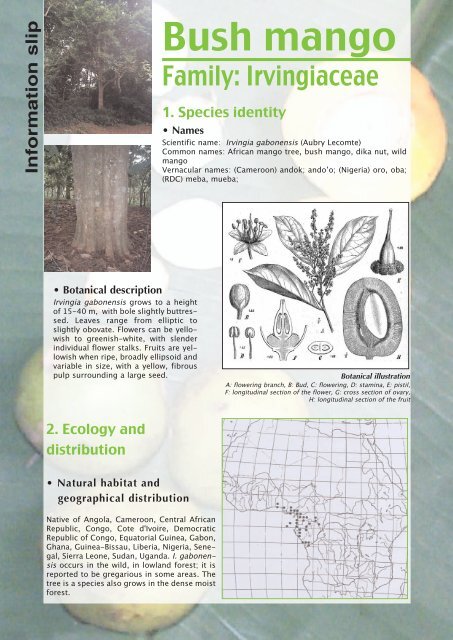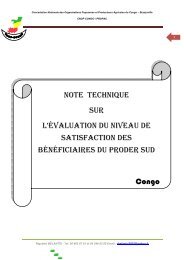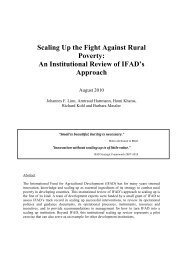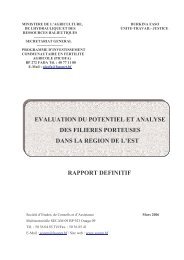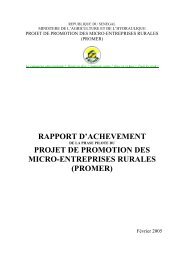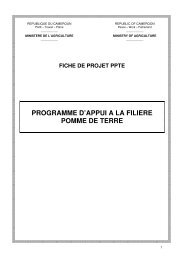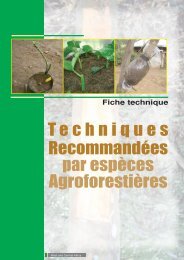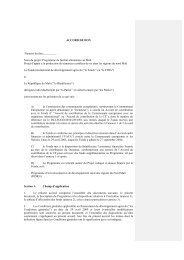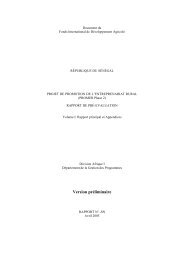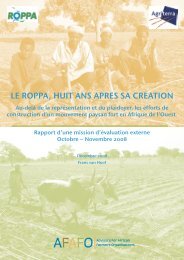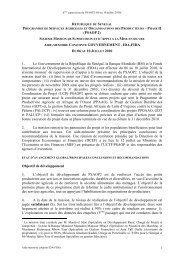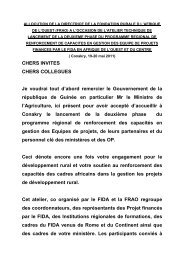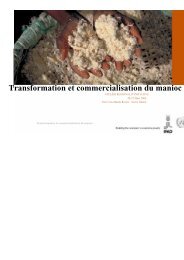Family: Irvingiaceae - FIDAfrique
Family: Irvingiaceae - FIDAfrique
Family: Irvingiaceae - FIDAfrique
Create successful ePaper yourself
Turn your PDF publications into a flip-book with our unique Google optimized e-Paper software.
Information slip<br />
Bush mango<br />
<strong>Family</strong>: <strong>Irvingiaceae</strong><br />
1. Species identity<br />
• Names<br />
Scientific name: Irvingia gabonensis (Aubry Lecomte)<br />
Common names: African mango tree, bush mango, dika nut, wild<br />
mango<br />
Vernacular names: (Cameroon) andok; ando’o; (Nigeria) oro, oba;<br />
(RDC) meba, mueba;<br />
• Botanical description<br />
Irvingia gabonensis grows to a height<br />
of 15-40 m, with bole slightly buttressed.<br />
Leaves range from elliptic to<br />
slightly obovate. Flowers can be yellowish<br />
to greenish-white, with slender<br />
individual flower stalks. Fruits are yellowish<br />
when ripe, broadly ellipsoid and<br />
variable in size, with a yellow, fibrous<br />
pulp surrounding a large seed. Botanical illustration<br />
A: flowering branch, B: Bud, C: flowering, D: stamina, E: pistil,<br />
F: longitudinal section of the flower, G: cross section of ovary,<br />
H: longitudinal section of the fruit<br />
2. Ecology and<br />
distribution<br />
• Natural habitat and<br />
geographical distribution<br />
Native of Angola, Cameroon, Central African<br />
Republic, Congo, Cote d'Ivoire, Democratic<br />
Republic of Congo, Equatorial Guinea, Gabon,<br />
Ghana, Guinea-Bissau, Liberia, Nigeria, Senegal,<br />
Sierra Leone, Sudan, Uganda. I. gabonensis<br />
occurs in the wild, in lowland forest; it is<br />
reported to be gregarious in some areas. The<br />
tree is a species also grows in the dense moist<br />
forest.


